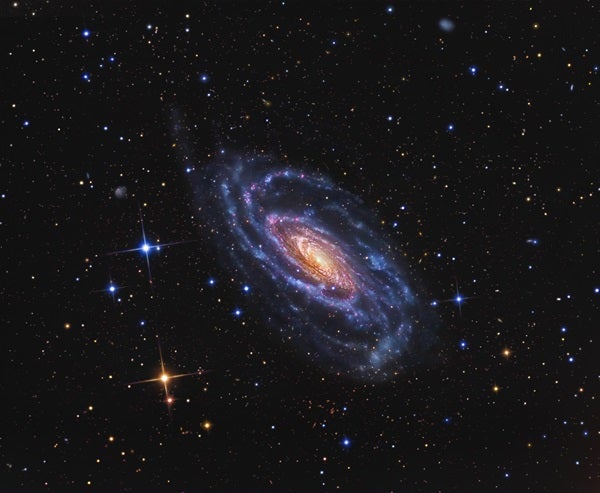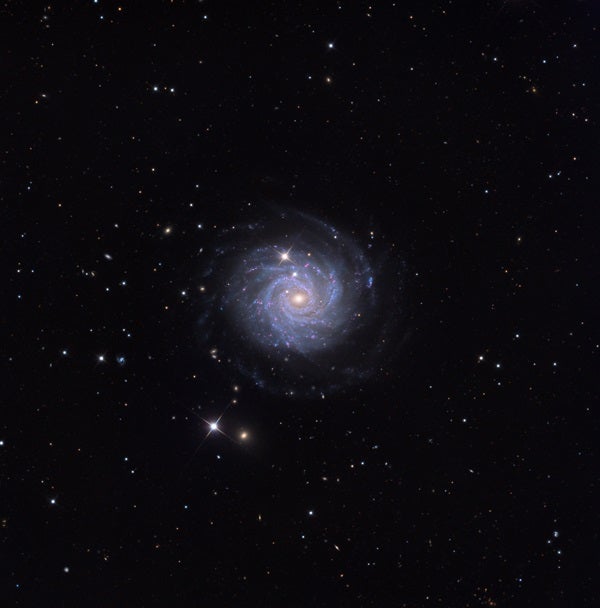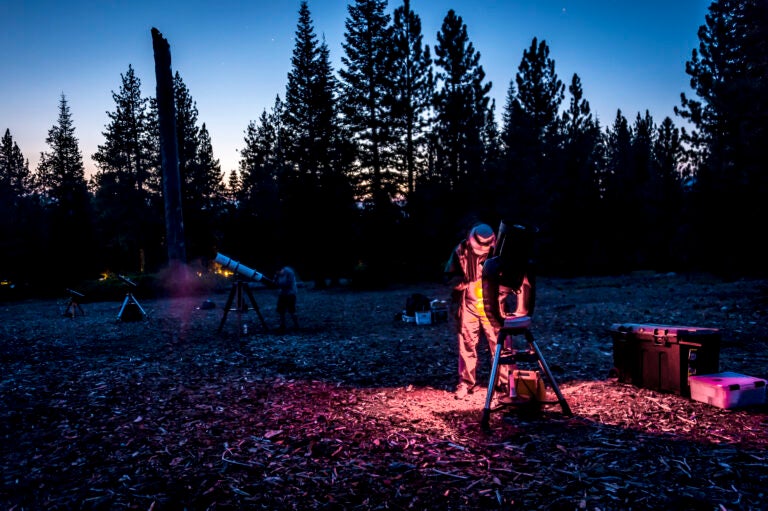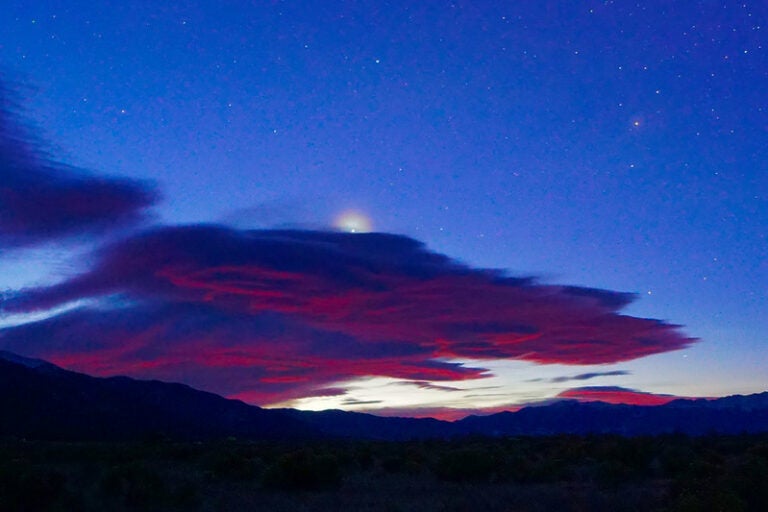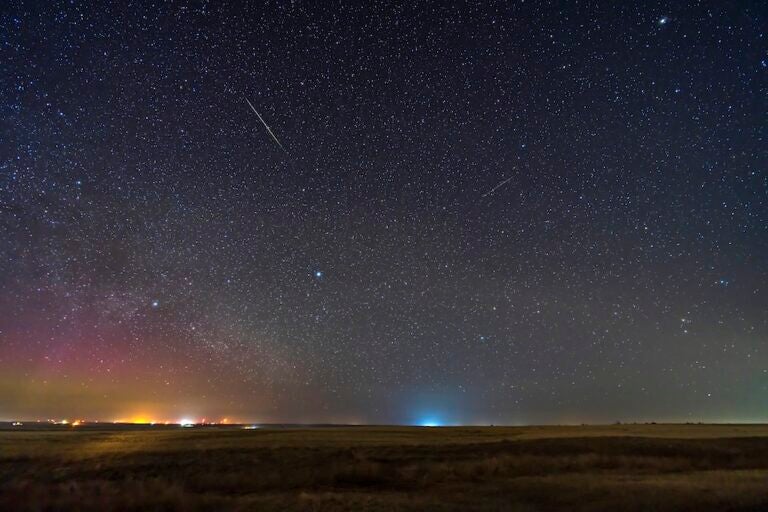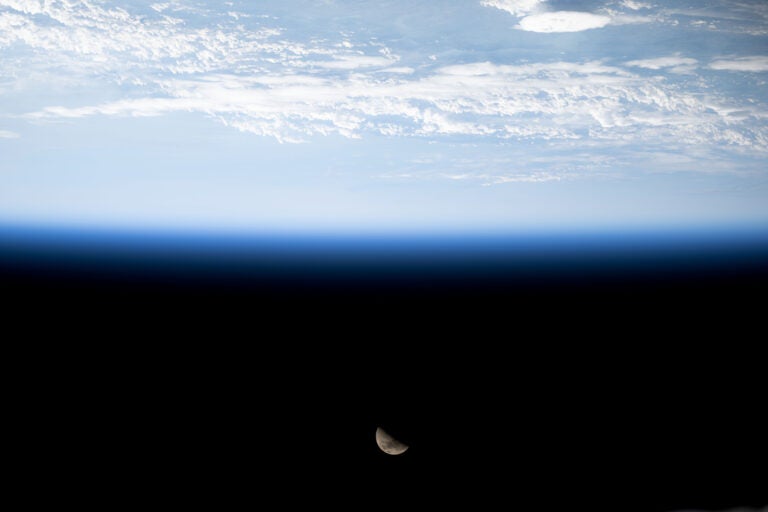If you find yourself under a dark sky this spring with handheld binoculars, and if you’re up for a challenge, why not try some galaxy hunting? The spring night sky contains a veritable haystack of galaxies, and some, especially the brighter Messier ones, are common sights for binocular users. But a deeper layer of uncommon targets also lurks among the multitude. Some require at least 10×50 binoculars to see, but many objects you may have written off are, indeed, available to you through such optics.
The task requires a level of enthusiasm usually found only in a true hobbyist’s heart — someone who can get excited over seeing a handful of ill-defined motes of extragalactic “fluff.” Your success, on the other hand, may depend largely on the darkness and clarity of the night and your skill as an observer. The latter includes knowing exactly where to look, using averted vision, and having the patience and persistence necessary. My inspiration for this column was Astronomy reader Scott Harrington of Evening Shade, Arkansas, who has been cataloging galaxies visible through 7×35 and 8×56 binoculars with great success.
A dark-sky journey
We start off gently by looking only 40′ northwest of Chara (Beta [β] Canum Venaticorum) for an eviscerated barred spiral called the Cocoon Galaxy (NGC 4490). Shining at magnitude 9.8 and lying only 25 million light-years distant, this tidally disturbed galaxy is relatively easy to see, appearing as a small, ill-defined haze.
Now hop over to Cor Caroli (Alpha [α] CVn), then make a 2° sweep to the east-southeast. We will then dive 70 million light-years into space as we search for the magnitude 9.8 spiral NGC 5005 and its slightly dimmer neighbor, NGC 5033 (magnitude 10.2), which lies about 30′ to its southeast. Both are diminutive oval flecks of pale light requiring much patience and attention; NGC 5005 has a more condensed core, making it slightly easier to see.
For our next target, swing westward to Tania Australis (Mu [μ] Ursae Majoris), and look 45′ to its west (and 36 million light-years away) where you’ll find a magnitude 9.8 spiral called the Little Pinwheel Galaxy (NGC 3184). It’s a smooth diffuse dot 10′ east of a 6th-magnitude star. If you succeed, drop some 15° southward to find its near-twin, the Sliced Onion Galaxy (NGC 3344) in Leo Minor. To spot this tight magnitude 9.9 spiral wonder some 20 million light-years distant, concentrate on roughly the midpoint between 40 and 41 Leonis.
Now locate the magnitude 5.6 star 31 Virginis, and look 2° west-northwest for the magnitude 9.7 lenticular known as the Hairy Eyebrow Galaxy (NGC 4526) — a challenge mainly because it is trapped between two 7th-magnitude stars. Therefore, you’ll need to make intermittent glances alternating between averted and direct vision to see it. I find it’s best to look at a point midway between M49 (which glows 1.3 magnitudes brighter) and NGC 4526, but focus my attention on NGC 4526. The galaxy itself is a minute star with a hint of “fog” around it.
Our final object is another resolution challenge. First, find magnitude 4.2 Tau (τ) Virginis, then look approximately 4° north-northwest for the magnitude 10.1 irregular galaxy NGC 5363. It glows as brightly as NGC 4526, though it’s slightly more compact, being almost stellar. However, it lies only 4′ southwest of a magnitude 8.5 star. In essence, you’re looking for the southwest component of a binocular double.
As always, let me know what you see — and don’t see — at sjomeara31@gmail.com.


